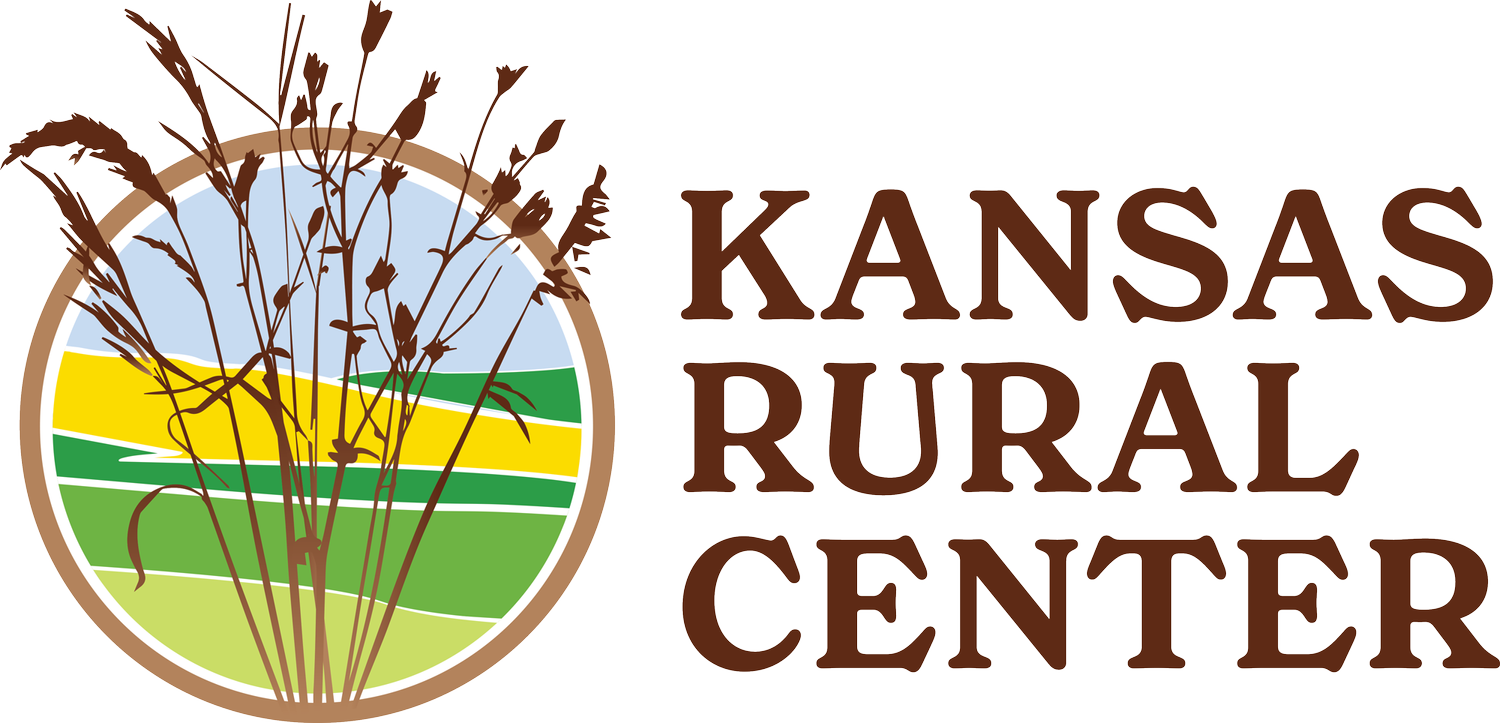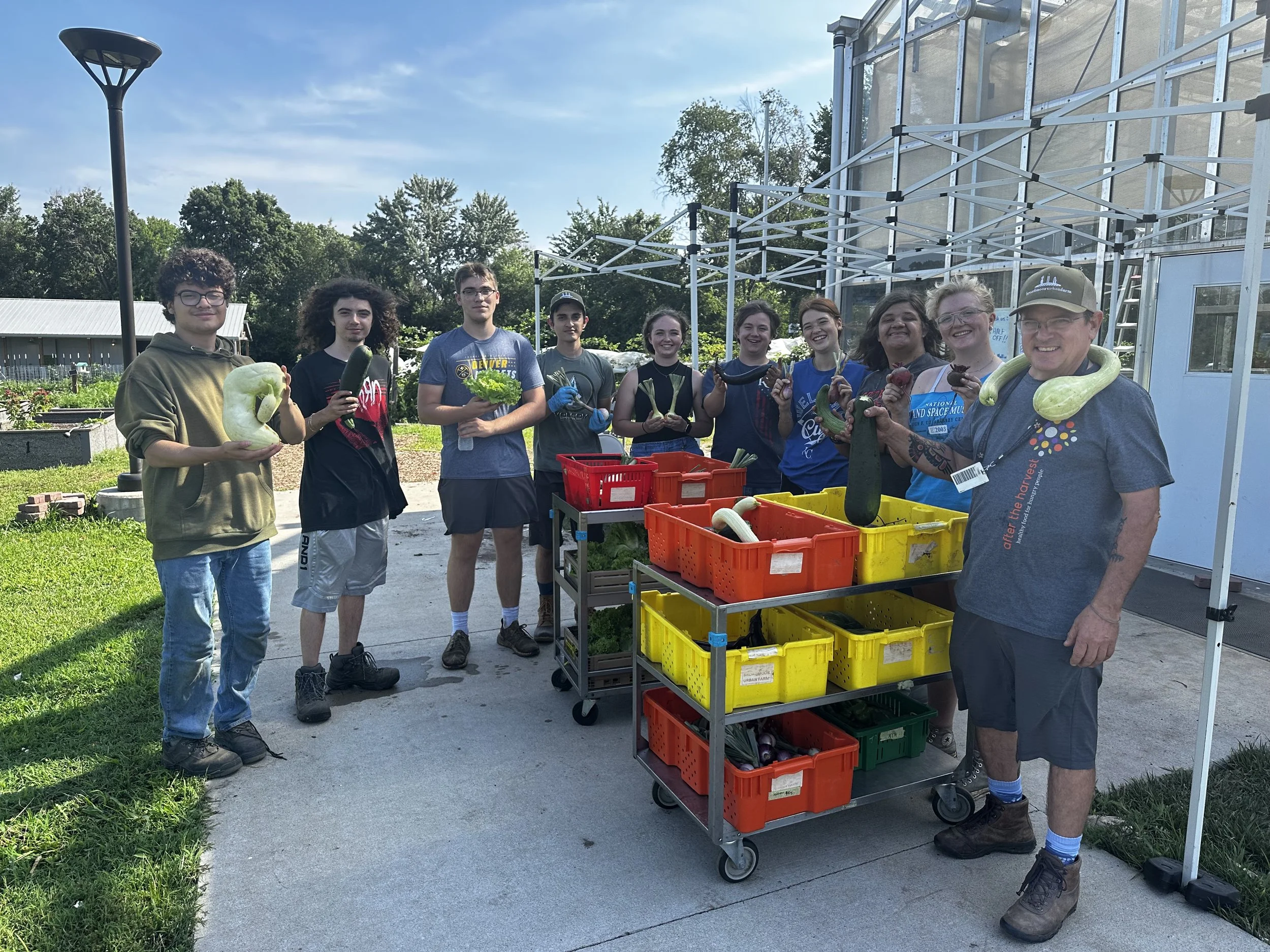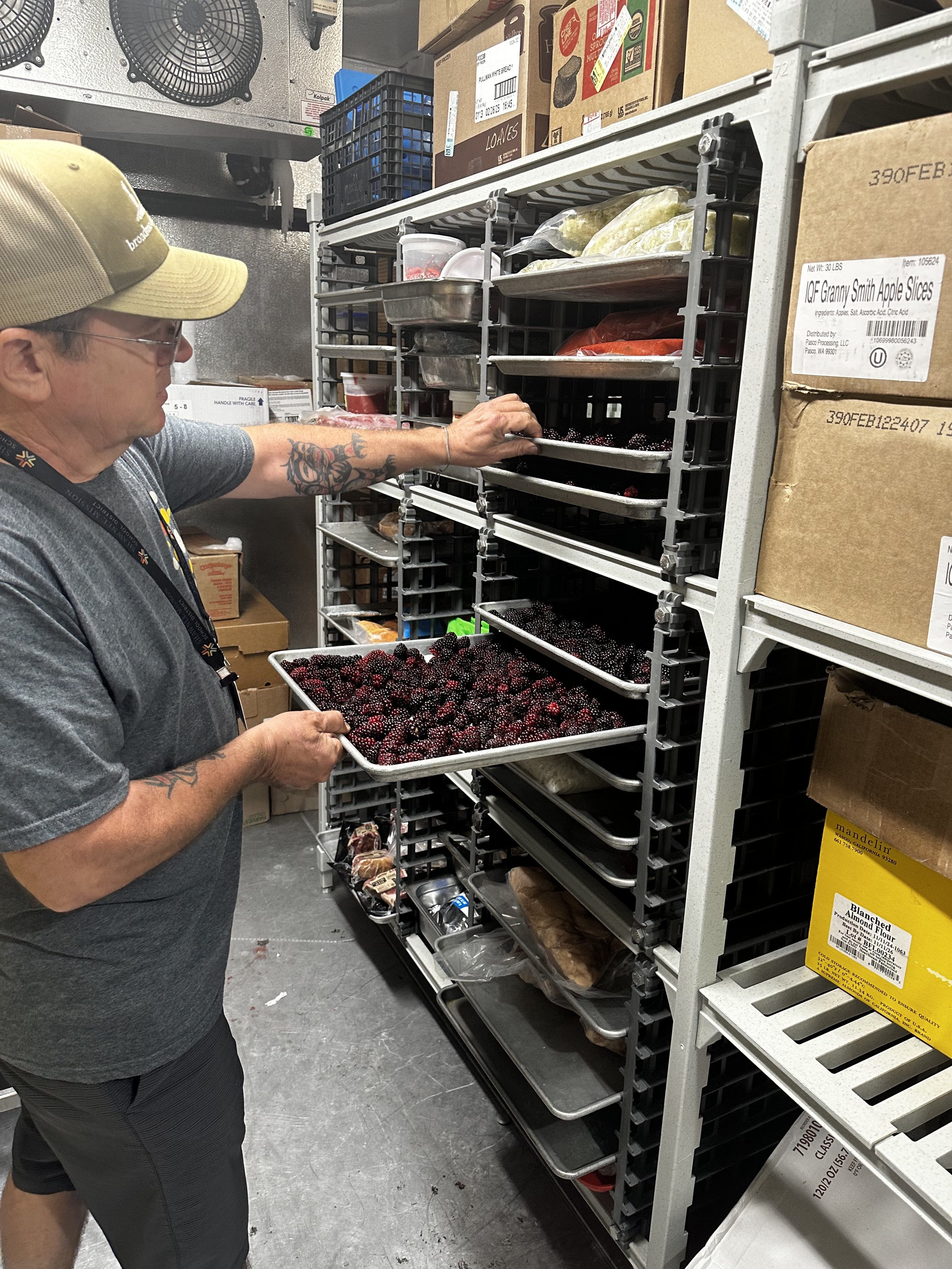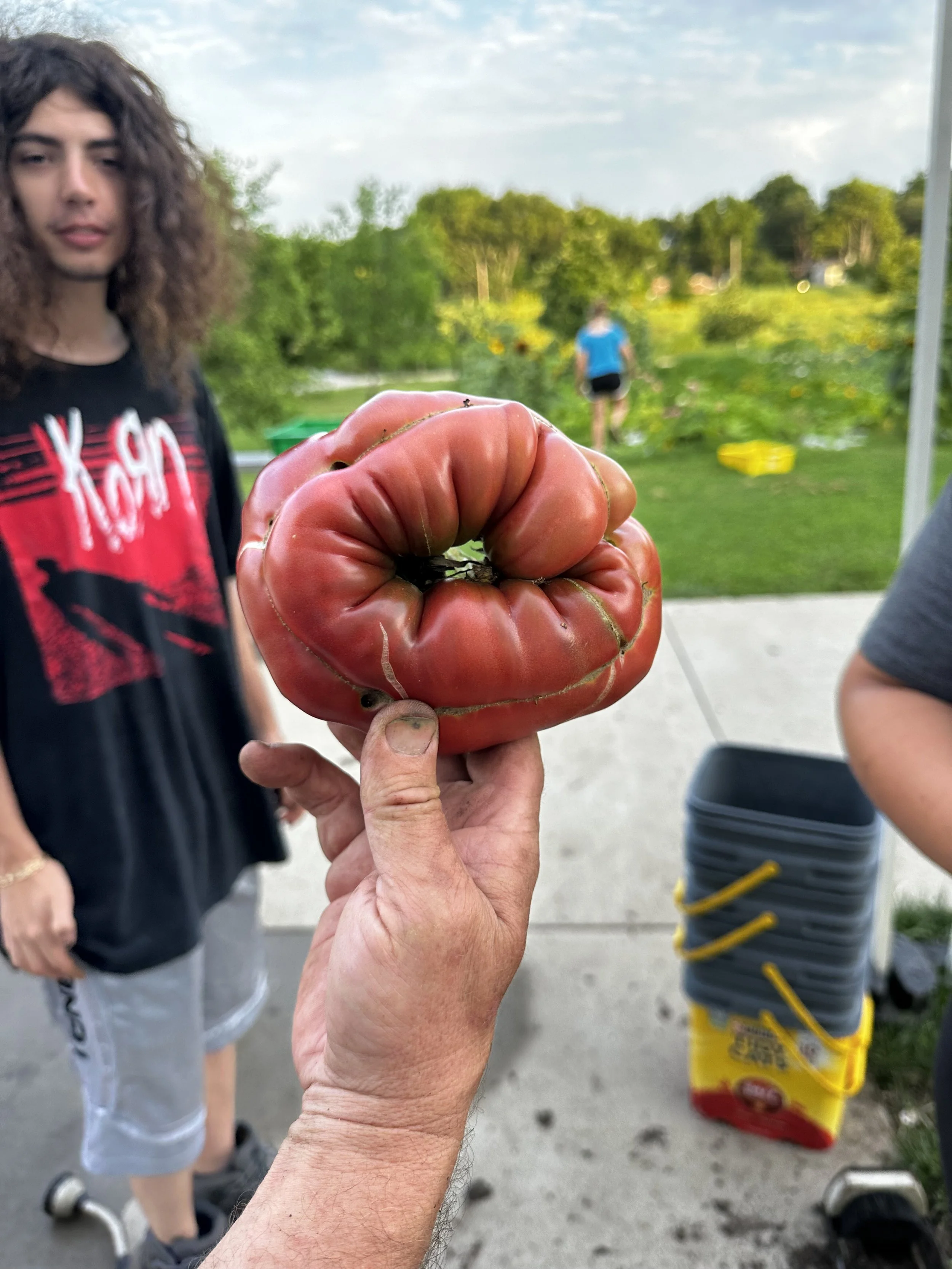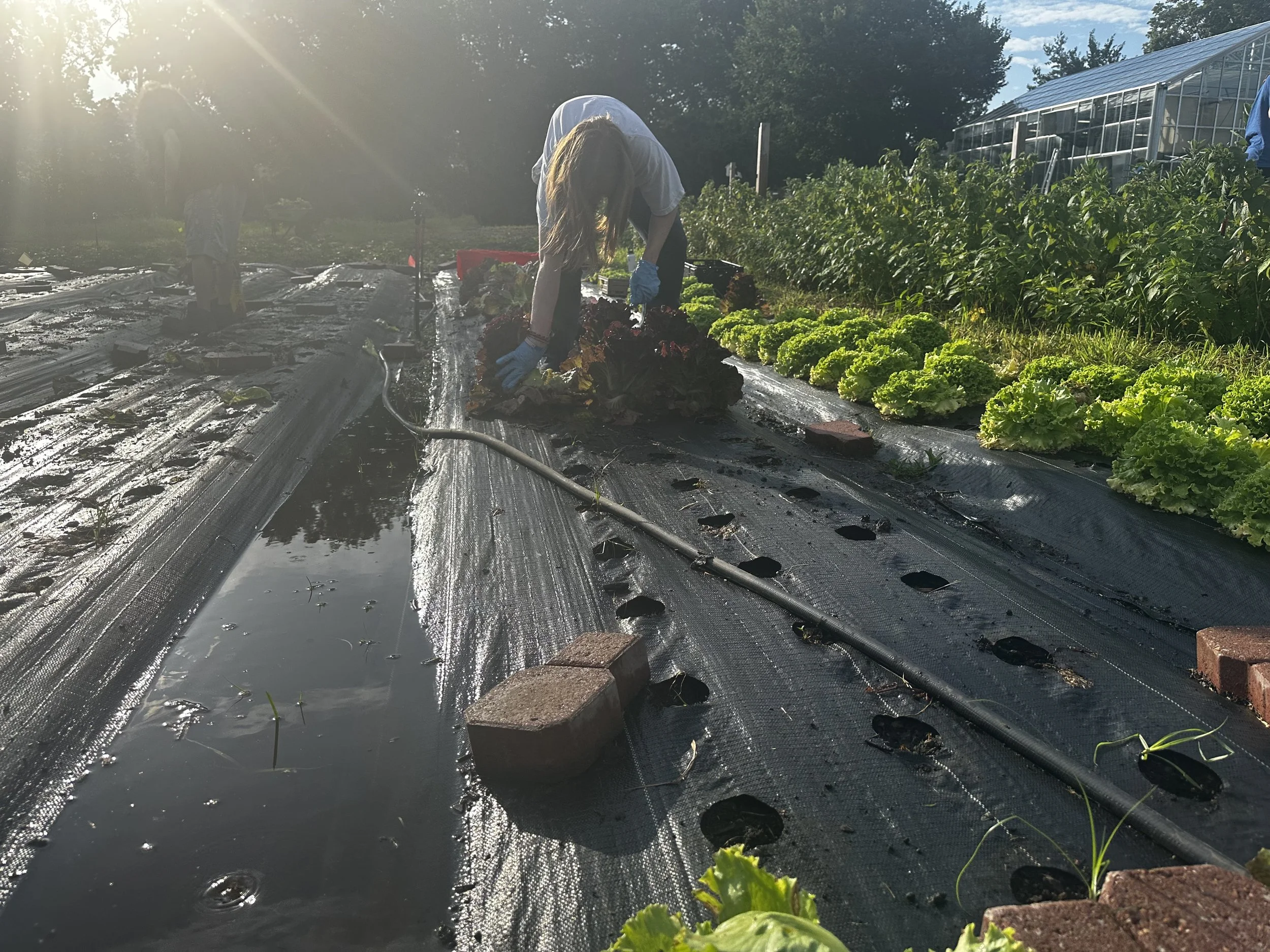Broadmoor Urban Farm: A Learning Opportunity
Broadmoor Farm was started as a branch of the culinary school in the Shawnee Mission School District. In 2004, Chef Bob Brassard was working to develop the district’s signature culinary program where the students would maintain a farm to bring them closer to the food they use in their masterful dishes. The original farm site was at the Broadmoor building on 83rd Street. The building had a playground that was no longer in use, providing space for the first farm where the culinary students could grow and harvest their own ingredients.
The program would later move to the new Center for Academic Achievement (CAA), completed in 2015. The building was adjacent to soccer fields that again provided ample greenspace for a future farm. Soccer fields were perfect for this because, other than the upkeep of the turf, they hadn’t been industrially contaminated, which is a consideration to take in many urban settings. In 2016 and 2017, funds were raised for the greenhouse and topsoil for the Urban Farm, followed by the barn and raised beds. Last year, the high tunnel was raised, and students look forward to selling produce at the culinary schools’ future outdoor kitchen.
Chef Brassard found that caring for the urban farm was outside the scope of interest for many of his culinary students, so he eventually shifted its management out of the culinary program while continuing to support its progress. The district found their successor in Doug Moles, a Chemistry teacher of over 25 years, who had experience developing community gardens and he helped establish the infrastructure of the original Broadmoor Farm. Tasked with creating a new curriculum for what would be Plant and Soil Science, Moles drew inspiration from courses in urban farming taught at Kansas State University. The students learn and labor on the farm to receive their science credit but are considered paid as staff over the summer. Moles looks forward to the farm exploring other credit opportunities for the students, such as physical education.
Doug Moles and I sat in the greenhouse discussing how the program came to fruition. I had been on the farm for a better part of the morning touring and interviewing students. Moles was one of my final interviews and he asked if the kids had said anything embarrassing that he should look out for. Unfortunately for my entertainment, they were very professional and well-behaved. He says that he hasn’t had trouble filling the summer farmwork positions and is able to vet students’ interest throughout the year. While he is their leader, there’s a clear camaraderie, sense of respect, and playfulness between the students and the teacher.
During his transition from Chemistry to Plant and Soil Science, Moles was successful in recruiting former students from his chemistry class. In 2023-2024, 92% of his students were previous students. Starting in 2025, he expects to see a decrease in numbers because many of his former students are graduating; however, he is beginning to see an increase in those who are learning about the class organically. Some students have returned from college to work on the farm over the summer, as they enjoyed it so much in previous years. The workers seem to be categorized into three groups: students interested in environmental science, culinary arts, or individuals who simply enjoy being outdoors.
Most of the assigned reading occurs outside of class as homework, so that students can be fully hands-on during their Plant and Soil Science block. Moles ties the farmwork and preparations into his curriculum by examining things like what constitutes healthy soil, balancing pH and what microorganisms to look for. Students use microscopes to identify the microorganisms and macroorganisms that are indicators of a healthy soil ecosystem. As they analyze the soil, they compare their findings to ensure that it is the most beneficial for the particular plant type they are growing. When the pH is too high, they can add acidic compounds like fertilizer; if it’s too low, they add potash procured from the culinary school’s bistro. They care for their own compost piles, having three: one in use, one resting, and one being replenished with waste. The students are able to reflect on the increased temperature and diversity of microorganisms that occur throughout the decomposition process.
Moles has also been able to engage students from outside of his class; a fun example he gave was when he asked the engineering students to help him create a produce bubbler and washing station. Instead of paying thousands of dollars for a station with a sink and bubbler, the students designed a system comprised of a mattress pump and PVC pipe, which blows air into the water-filled bucket. The station itself was a Facebook marketplace find from a Chinese restaurant. He reflects that the first year of the program had such extensive startup costs that he started the next year with a $6,000 budget deficit. However, in his second year of selling at the market, he has earned as much as $3,000 in a day, making his program self-sustaining and driving home the viability of food production as a career choice.
The student workers are often questioned about the authenticity of their farmwork based on what is conventionally viewed as a farm: monocultures. Because they aren’t growing hundreds of acres of corn or soybeans... are they really farmers? Aren’t they gardeners? Moles counters that trope by asking, “Historically, weren’t farmers producing food to sustain their own bodies, livelihoods, and communities’? Are there more weeds? Yes.” Moles notes that he sees less erosion, and that they do remove particularly loathsome weeds when they’re directly competing with his crops. There is no tolerance for ladies’ finger, pigweed, and bindweed at Broadmoor Farm.
Moles believes that his students are getting more practical experience than they would receive in a classroom, allowing them to truly connect with and apply what they’re learning. Where he used to host six classes a day with up to 30 kids, he now oversees these longer classes with fewer students, giving him more time to tailor lessons to their learning styles and explore their personal interests on the farm. He also finds that the classroom is incredibly therapeutic. The students are working outside in nature, experiencing the sunrise as they beat the heat through the summer. They are witness to the nocturnal creatures returning home for the night and the awakening of the diurnal creatures and their sounds. He reflects that the whole experience, while being physically demanding, is very calming. Moles reminds me that ‘calming” is not an adjective often used to describe most high school coursework. This class isn’t a cookie-cutter program that gives just one direction. It exposes the students to many facets of what success can look like. It builds confidence in students’ ability to process and adapt. They are experiencing in real-time how they can stay in forward motion while making changes in their plans. Moles stresses how important it is for the kids to take more than one semester to really see the big picture of the systems work they’re participating in. The student workers enjoy seeing the lush harvest that results from their year-round learning. Without this summer opportunity, Moles feels that the student workers wouldn’t have this complete look at the success of their labor. They are encouraged to follow their interests and to request specific crops, such as microgreens. The students have had a large crop this summer and are starting to see food production as a viable source of income and community resilience. They sell their produce at the farmers market, to local chefs, and donate the rest to food pantries.
Moles emphasizes that the success of their farm—and of other schools hoping to create similar community farms—relies heavily on community investment. While the project initially faced strong pushback from nearby residents, many of the farm’s earliest critics have since become some of its biggest supporters. Today, they enjoy walking past the gardens, admiring the progress, and striking up conversations about the work being done. The addition of wetlands with walking trails in front of the farm and the colorful mix of flowers and vegetable crops, has made the farm an appealing space for the broader community. Some community members even remark, “Why didn’t we have this when I was a kid?” Retirees in particular often stop by to share knowledge, offer suggestions, and feel included in the farm’s continued success. Equally important is the visibility of the students themselves. Community members and district employees can see them working hard, engaged, learning, and enjoying the experience. Having students “front and center” not only strengthens support but also demonstrates the value of hands-on, experiential learning opportunities, clearing the way for more to be offered to students in the future.
Doug Moles and his student workers show off their morning harvest!
Doug Moles adding blackberries to the shared refrigerator at the culinary school
This heirloom tomato was worth taking a break to appreciate
Lettuce being cleaned with the student-built bubbler
Student harvesting lettuce heads
Article by Charlotte French-All
